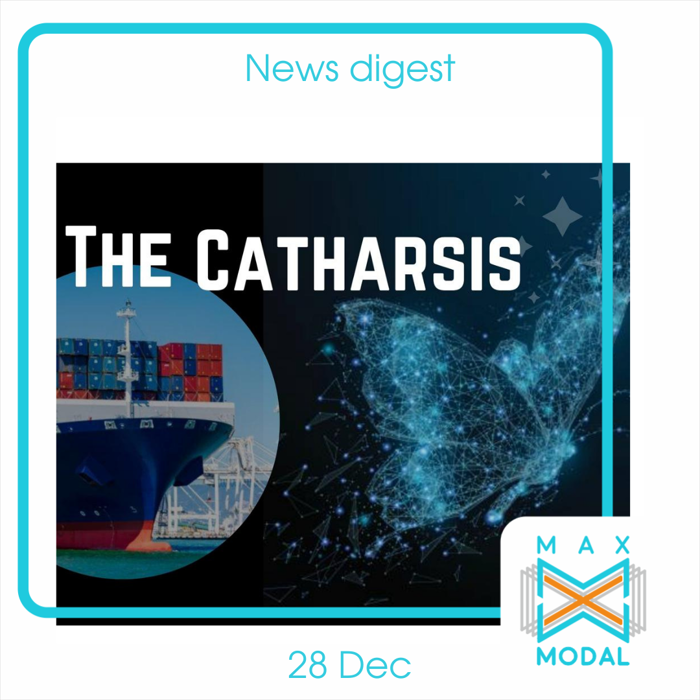News digest. 28 Dec
Shipping lines are shedding off the old business models and welcoming the New Year with more flexible and agile approach. What will it take to win the game in the coming months?
Through hardships to stars or a year of transformation – this is how 2021 can be described if we look at the major shift in the lines’ business models towards becoming full-blown providers of the inland logistics services. What has caused such catharsis? Ever Given stuck in Suez disrupting the game, stratospheric rates that left shippers almost bankrupt and logjams all over the world with epic piling up have led to major reconsiderations of the ways companies operate. What tops the picture in December is the disruption due to machinery failure that left a containership prang in Taiwan. The saga of an asset-light business model that included leasing warehouses, trucks and aircraft, and using contract labor for a long time, and maintained flexibility with minimum capital expenditures has ended. The crisis has proven that relying on third parties to make on-time deliveries is a losing game, thus In 2021, the major carriers invested heavily in becoming integrated logistics supermarkets from which customers can order individual services, such as customs brokerage or port-to-port transportation. It is clear that for big lines it means more agility with an extension of end-to-end operations but what about shippers? They can also benefit from it, as this extension will give more room for competition and a variety of services. However, when the lines acquire other companies, and we have seen it happening over the course of this year, they have to put tremendous effort to make this integration smooth, which requires organizational changes, IT changes, customer integration. Simply sticking together end-to-end will not do anything, and not many understand it because usually, the main reason for acquisitions is the desire to get in the game when the post-acquisition strategy is not defined.
In addition, it is a people-heavy business and if forwarders want to stand the competition, they will have to invest in localized knowledge and better forecasting, otherwise, shippers will. They are already spending time to improve their forecasting, and that will help them ask for contractual changes, based on relationships, rather than transactional. Their appetite will only keep growing, so 2022 should be the year when the industry needs to evolve the way it manages and executes supply chains. After all, 2021 has given all the necessary tools for it and luckily, ports will receive additional investment too. In the case of the US, they may come from abroad with Qatar planning to invest $10 billion. The east coast is past due for improvements while the west coast, although it is still problematic, holds the best potential, according to analytics.
Like a spider web, railways continue to expand and connect the most vital facilities. For a while, a part of the North-South transport corridor passing through Azerbaijan was under reconstruction, and recently it has renewed its work. Apart from connecting the country with Russia, the railway line is essential for the connectivity of the Abheron peninsula with the rest of the region. The upgrades also concern the UK where under a wide-ranging program of works Network Rail is improving capacity and relieving bottlenecks in and around Manchester. Despite the recent announcement that many capital projects including the one dedicated to the provision of a high-speed line, this initiative has not been crossed out. Over the Christmas holidays, these improvements are a crucial part of the Transpennine Route Upgrade, which will better connect the North and allow more trains to run in the future. In the meantime, the trend of many companies going east has already been highlighted, and DB cargo Eurasia jumps on it too with a new connection between China-Europe through Poland. The country has been in focus for many countries, so who knows, maybe Poland will have all the trump cards to become a new rail frontrunner in the region?

